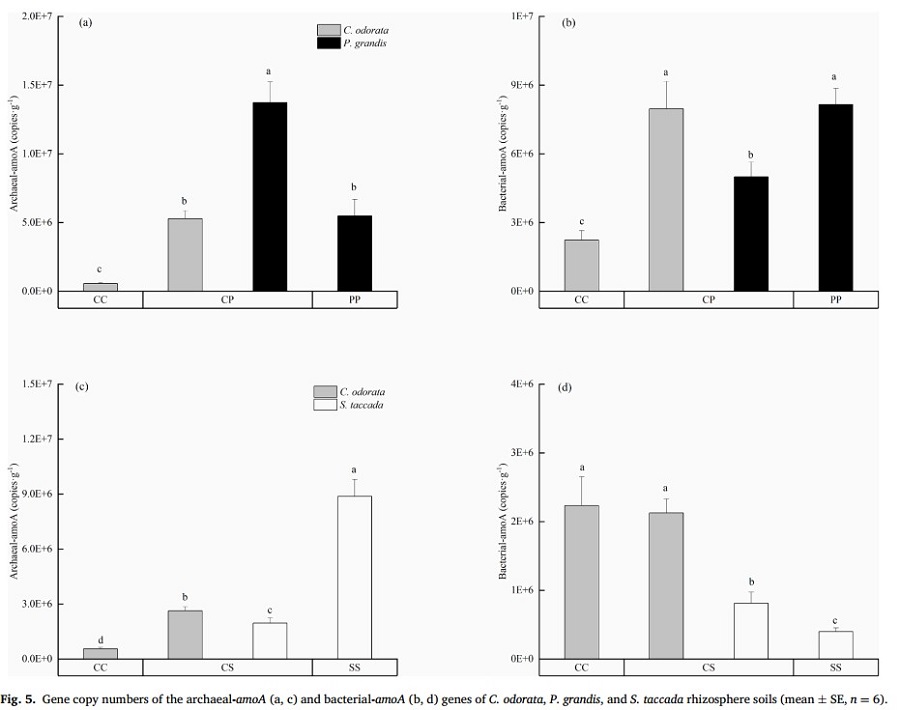Chromolaena odorata affects soil nitrogen transformations and competition by altering ammonia oxidation microorganisms
The invasion mechanism of alien plants is the key basis for preventing and controlling biological invasion. Invasive plants can improve the utilization efficiency of soil nutrients by altering soil microbial composition, and creating a favorable soil environment conducive to invasion.Therefore, it is important to understand how invasive plants affect specific microbial functional groups and their ability to alter soil nutrient cycling.
In recent years, Chromolaena odorata has become one of the most harmful invasive plants in the Paracel Islands, and has caused serious ecological and environmental problems to the local vegetation and ecosystem. It is crucial to understand how C. odorata invades native vegetation in tropical coral islands by affecting soil nitrogen transformations and to offer a theoretical basis for prevention and management of invasive plants.
In a study published in Science of the Total Environment, a research group led by Professor JIAN Shuguang from South China Botanical Garden, the Chinese Academy of Sciences, has revealed the effects of C. odorata invasion on soil nitrogen conversion.
In this study, researchers selectedC. odorataand two most common native plant species (Pisonia grandisandScaevola taccada) in tropical coral island as the research object.They found that the biomass allocation ratio in the above-ground part of C. odorata was higher than that of the two native plant species in the face of interspecific competition.
When C. odorata were planted with native plants, more ammonia-oxidizing bacteria were enriched in its rhizosphere, and the available nitrogen content and net mineralization rate of the rhizosphere soil on C. odorata were higher than that of on the native plants. C. odorata had a higher nitrogen use efficiency than native plant species and could reduce the nitrogen mineralization rate of native plants, which was conducive to competition for light and soil nutrient resources and achieve competitive advantages to native plants.
These findings provide a new perspective for the successful invasion of plants based on plant-soil interaction and help to understand the acquisition and competition strategies of soil nitrogen of C. odorata and provide important evidence for the prevention and control of invasive plants in tropical coral islands.
First author information: Chengzhi Yuan: PhD candidate, Research Center for Ecology and Environmental Sciences, South China Botanical Garden, Chinese Academy of Sciences, Research field: Restoration ecology and island ecosystem, E-mail: yuan19960922@163.com ; Tel : 020-37252585.
Corresponding author information: Shuguang Jian, Professor, Research Center for Ecology and Environmental Sciences, South China Botanical Garden, Chinese Academy of Sciences, Research field: Restoration ecology and vegetation ecology, E-mail:jiansg@scbg.ac.cn ; Tel : 020-37252585

Fig.1. Changes in N cycle: (a, d) ammonification, (b, e) nitrification, and (c, f) mineralization rates of rhizosphere soils

Fig.2 Gene copy numbers of the archaeal-amoA (a, c) and brchaeal-amoA (b, d) genes of C. odorata, P. grandis, and S. taccada rhizosphere soils
File Download: